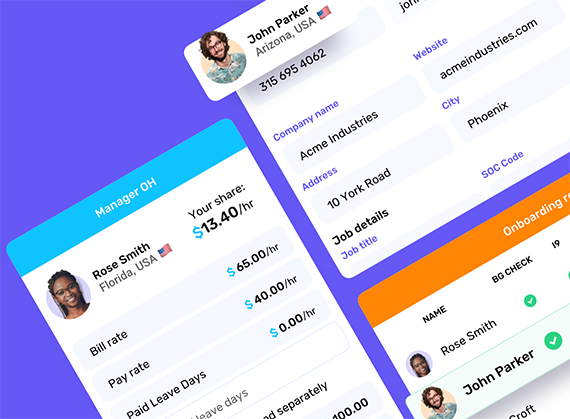In today’s global economy, businesses are increasingly looking beyond their borders to tap into international talent pools. This expansion, while exciting, comes with its own set of challenges, particularly regarding employment regulations, tax laws, and payroll management. This is where an Employer of Record (EOR) comes into play. If you’re considering using an EOR, here are the key things you need to know.
What is an Employer of Record (EOR)?
An EOR is a third-party organization that takes on the legal responsibilities of employing workers on behalf of another company. This means the EOR handles all the administrative and legal aspects of employment, including payroll, benefits, taxes, and compliance with local labor laws. Essentially, the EOR becomes the legal employer while the client company manages the day-to-day work of the employees.
Benefits of Using an EOR
The Employer of Record industry started by helping staffing agencies hire temp workers, but has since expanded to enabling any company to hire temporary, contract, or remote workers easily and compliantly. Below we explore some of the benefits of using an EOR.
- Simplified Cross Border Hiring: An EOR enables companies to quickly and compliantly hire employees in new states, territories, or countries without having to set up a local entity. This can save significant time and resources.
- Compliance Assurance: Labor laws vary greatly between countries and can be complex. An EOR ensures that your company complies with all local regulations, reducing the risk of legal issues.
- Cost-Effective: Establishing a legal entity in a foreign country can be expensive and time-consuming. An EOR can be a more cost-effective solution, especially for short-term projects or testing new markets.
- Focus on Core Business: By outsourcing HR responsibilities to an EOR, your company can focus on its core activities and growth strategies, rather than getting bogged down by administrative tasks.
Key Considerations When Choosing an EOR
- Experience and Reputation: Look for an EOR with a strong track record and positive reviews. Their experience in your target market is crucial for smooth operations.
- Compliance and Legal Expertise: Ensure that the EOR has robust processes in place for staying up-to-date with local labor laws and compliance requirements. This can prevent costly legal complications.
- Cost Structure: Understand the fee structure of the EOR services. Some charge a percentage of the employee’s salary, while others have fixed fees. Make sure there are no hidden costs.
- Industry Focus: Different EORs focus on different types of industries. Some industries require specific expertise, licensure, and processes to properly be supported. Make sure that your EOR is aligned with your industry before moving forward with a partnership.
- Technology and Reporting: A good EOR should offer a user-friendly platform for managing employees, tracking expenses, and generating reports. Transparency in their operations is key.
Common Misconceptions About EORs
- EORs Control Your Employees: The EOR handles the legal employment responsibilities, but the client company retains control over the employees’ daily tasks and responsibilities.
- EORs Are Only for Large Companies: EOR services can benefit companies of all sizes, from startups to large enterprises. Small and medium-sized businesses can particularly benefit from the flexibility and cost savings.
- EORs Are the Same as PEOs: While both EORs and Professional Employer Organizations (PEOs’) manage HR functions, an EOR is the legal employer of the workers, while a PEO co-employs the workers with the client company. This key difference makes a large impact on the level of risk client companies take on.
Steps to Implement an EOR
- Identify Needs: Determine why you need an EOR and what specific services you require. There are many use cases that EORs support. Knowing your use case is critical to finding the right partner.
- Research and Shortlist: Research potential EOR providers, considering their experience, services, and costs. Shortlist the ones that meet your criteria.
- Engage and Negotiate: Contact shortlisted EORs, discuss your needs, and negotiate terms and pricing.
- Onboard Employees: Once an EOR is chosen, work with them to onboard your employees, ensuring all necessary documentation and compliance requirements are met. Properly implementing an EOR program early on is key to long term success. That’s why finding an EOR with a robust platform is important to ensure a smooth onboarding process.
- Monitor and Evaluate: Partner with your EOR along the implementation journey to improve communication, processes, and worker experience so that the program has the highest level of success.
Conclusion
Using an EOR can be a strategic move for businesses looking to expand globally or streamline their HR operations. By understanding the benefits, choosing the right provider, and effectively implementing EOR services, your company can focus on growth while ensuring compliance and reducing administrative burdens. The key is to thoroughly research and select an EOR that aligns with your company’s specific needs and goals. With the right partner, you can confidently navigate the complexities of international employment and drive your business forward.





